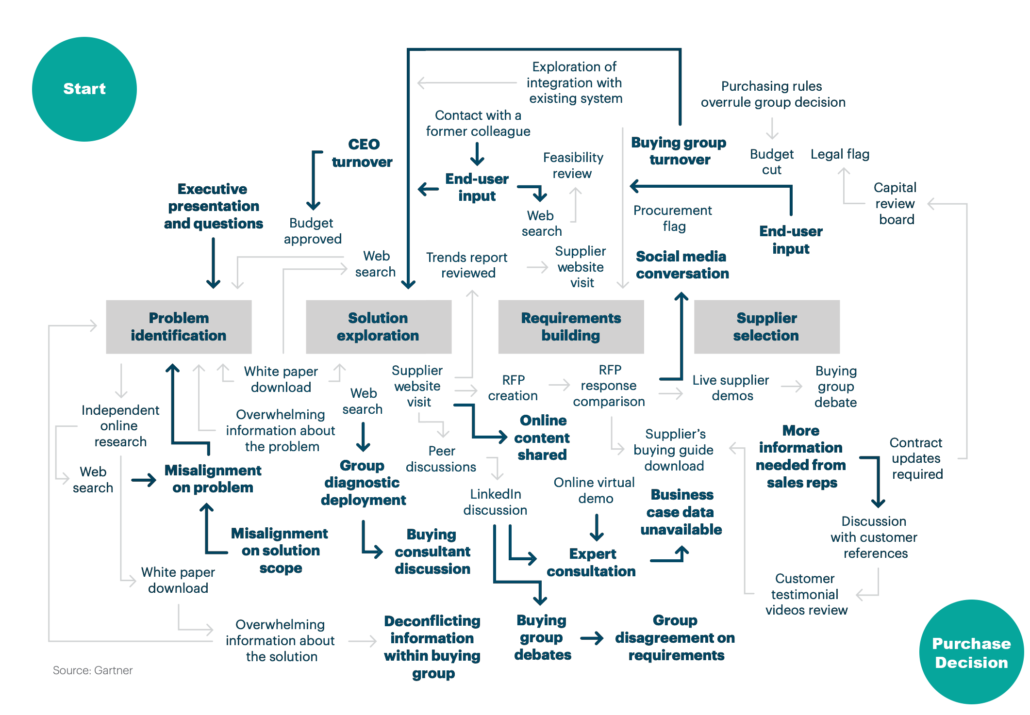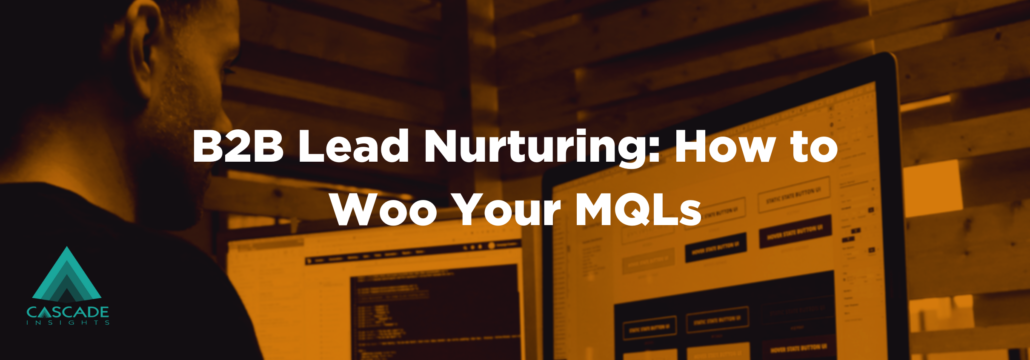B2B leads don’t become customers overnight. B2B marketers need to master the art of lead nurturing to guide prospects in their buying journey. At this phase, your content has piqued their interest enough to fill out a contact form or download a whitepaper. Now your job is to keep their interest. You have to convince them that your solution is the best fit.
Knowing how and when to make contact with your marketing qualified lead (MQL) is the key to winning them over. But, there are a few things you need to consider before you make your move.
Make Sure the Leads are Actually Qualified
Before you devote time and resources to lead nurturing, make sure the lead is worth the effort.
Lead generation is a key performance indicator for marketing departments. As in most cases, however, quality is better than quantity.
The only way to determine lead quality is to first establish and understand your ideal customer profile (ICP) and buyer personas.
A low conversion rate between MQLs and sales qualified leads (SQLs) indicates a problem somewhere in your sales funnel. Perhaps your team needs to revisit or even redefine your ICPs. Maybe your website messaging is attracting the wrong type of buyers. Whatever the issue, it all starts with how you set the standard.
With every lead that enters your database, you need to ask three essential questions:
- Do your products or services directly address the needs of this lead? Does your solution assist or resolve their jobs-to-be-done?
- Is the lead’s organization a good fit in terms of industry type, company size, or geography?
- Does the lead’s organization align with one of your target buyer personas or influencers?
If the answer to any of these questions is “no,” then your organization isn’t suitable for their needs. Your marketing and sales teams need to be able to identify that it’s not a good fit and communicate that to the lead in their follow up. Never be afraid to tell a prospect “no” if it’s in their best interest.
Set the Course for Your MQLs
Once you establish the lead is a good fit, you need to offer some direction. Remember, today’s customers have unprecedented access to quality information and feel overwhelmed because of it.
The Gartner 2019 B2B Buyer Survey found that 90 percent of buyers believed the information they encountered in their purchasing decision to be high-quality. But over half (54 percent) reported that the amount of quality information was overwhelming. Further, 66 percent of buyers said that the information across vendors seemed trustworthy- but contradictory.
Instead of shoving more content at buyers, successful marketers and sales reps will accommodate prospects by helping them filter and apply information in a way that directly addresses the problem at hand.
In fact, Gartner researchers noted that “providing customers with information specifically designed to help them advance their purchase has the single biggest impact on driving deal quality that we’ve ever documented in all of our research.”
The buyer’s journey is difficult enough as it is without you adding to the clutter. With various factors convoluting B2B buying decisions, the path to purchase doesn’t unfold in a series of steps. Rather, it is a “looping” or revisiting of buying jobs that prospects perform more or less simultaneously, according to the Gartner survey. These buying jobs include problem identification, solution exploration, requirements building, and supplier selection.

The success of your lead nurturing strategy depends on your ability to simplify the buyer’s journey. That’s why your marketing materials should clearly explain:
- Why you have the best solution to their problem.
- How to move forward in the path to purchase.
Don’t Ghost Them
If you find that quality isn’t the issue with your MQLs, perhaps it’s a matter of responsiveness in your lead nurturing. Our research indicates that one of the most common ways companies lose leads is by being too slow in their response to inquiries or not responding at all.
Consider a study published in Harvard Business Review in which web-generated test leads were sent to 2,241 U.S. companies so researchers could measure response times. What the researchers found indicates a sweeping problem across business.
- Nearly one in four companies (23 percent) didn’t respond at all to the lead.
- Another 24 percent took more than 24 hours to respond.
- Only 16 percent responded within 24 hours.
- The remaining 37 percent responded within an hour.
- Among the companies that responded within 30 days, it took them 42 hours, on average.
Given how quickly warm leads go cold, it’s not an exaggeration to say these findings highlight one of the single most pervasive causes of losing business, aside from poor website design.
Be Responsive
To further illustrate the repercussions of lack of a swift follow up, a separate study analyzed 29 B2C and 13 B2B companies in their responsiveness to 1.25 million sales leads. The findings revealed that companies who contacted prospects within an hour of receiving a query were almost seven times more likely to have a conversation with a key decision maker as those who responded even an hour later. Further, those who responded to prospects within an hour were a staggering 60 times more likely to have a conversation with a key decision maker than those that took 24 hours or longer.
Many companies are losing business because they just aren’t fast enough. If that includes you—and there’s a solid chance it does—the best thing you can do is streamline your CRM processing and lead retrieval to follow up in real-time and ensure no lead gets left in the digital void.
Make Your Leads Feel Appreciated, But Don’t Come On Too Strong
Once prospects send you an inquiry or download your content, a welcome email is a great way to keep them interested. That said, it’s a delicate balance between staying top-of-mind and spamming your leads.
When you do it right, email marketing can yield major improvements in your engagement and conversion rates. The key is to make your messaging personalized and informative—with an emphasis on the latter.
Unlike with B2C marketing, B2B shouldn’t try to play on pathos and create a sense of urgency. You need to convince B2B buyers with logic and proof points that they can relay to the other stakeholders in the buying group.
The types of content that work best to this end are thought leadership insights and case studies. According to a Demand Gen Report survey, 96 percent of B2B buyers want more content that features input from industry thought leaders, and 73 percent use case studies as part of their vendor research. Furthermore, nearly half (47 percent) of buyers viewed 3-5 pieces of content before making contact with a sales rep.
Another reason email is the perfect avenue for lead nurturing is because it’s the primary source of sharing useful content for 72 percent of B2B buyers, according to an Earnest Agency report.
However, it’s important to be mindful of your prospects’ time. Be careful not to spam them with irrelevant info or too much content.
Handle with Care
Above all else, treat your buyer like a person, not a number. That’s the key to landing them. As a Salesforce Research study showed, among the 6,700 business buyers and consumers they surveyed, 84 percent of customers agree that a personable approach is very important to winning their business.
Your job as a B2B marketer is to guide (not push) buyers in their journey.
That means you need to listen to their needs and adjust accordingly. The worst thing you can do is be too aggressive. If your lead isn’t ready to move forward, don’t rush them by shooting over an unsolicited RFP. Nurture them with the content they need and take pains to spare them of anything they don’t.
Once you set a clear path for them, they’ll be on their way in the next phase of the B2B buyer’s journey.
This blog post is brought to you by Cascade Insights, a firm that provides market research & marketing services exclusively to organizations with B2B tech sector initiatives. Worried too many MQLs aren’t becoming SQLs? Our B2B buyer’s journey research can help.
Special thanks to CEO Sean Campbell & Director of Systems Design Philippe Boutros for advising on this article.

